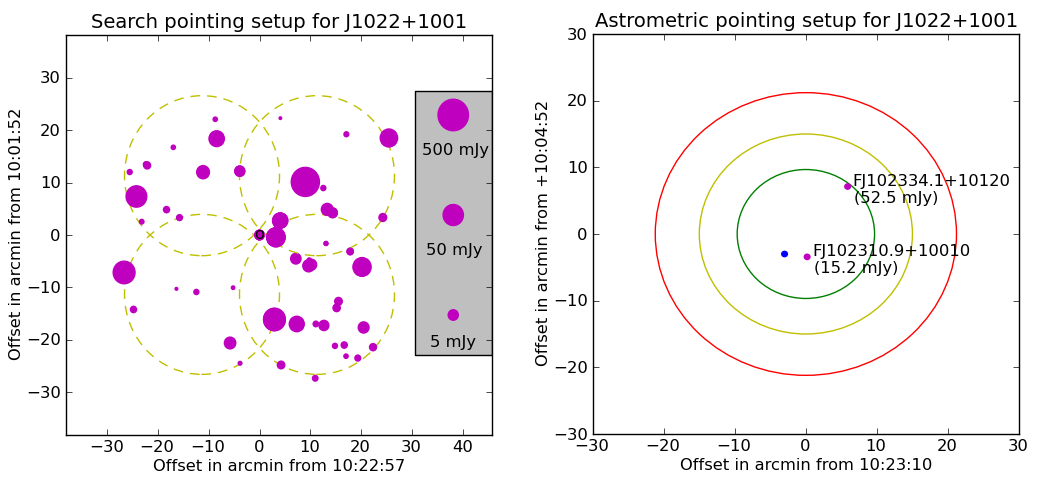Daily Image
18-11-2011High resolution radio snapshots
| Submitter: | Adam Deller |
| Description: | Astrometric observations using Very Long Baseline Interferometry (VLBI) can be used to pinpoint the position of an object to the level of 10s of microarcseconds - one hundredth of a millionth of the width of the full moon. The PSRPI program ( https://safe.nrao.edu/vlba/psrpi/ ; http://arxiv.org/abs/1110.1979 ) is making astrometric measurements for a sample of 60 targets, obtaining accurate distances and transverse velocities in order to map the distribution of pulsars in the Milky Way. However, getting to this level of precision at low frequency (~ 1-2 GHz) requires a calibrator source very close to the target on the sky in order to identify and remove the propagation effects incurred by the source signal as it travels through the Earth's ionosphere. Traditionally, identifying suitable calibrators was a bottleneck for a large astrometric program. Mapping large fields at VLBI resolution to find calibrators is logistically impractical, and so candidate calibrators (sources identified from low-resolution radio surveys such as NVSS and FIRST) were generally processed using small images sequentially. However, a new ‘multi-field’ capability of the DiFX software correlator allows many candidates to be processed simultaneously, vastly reducing the resources required. This is illustrated in the left plot, which shows a calibrator search from the PSRPI program utilising four search pointings around the pulsar J1022+1001. The candidate calibrators are shown in magenta, and the telescope primary beam is shown in yellow. In each pointing, an average of 20 candidates is imaged from a single snapshot, saving an order of magnitude in computation. The right plot illustrates the final astrometric pointing setup, with the pulsar shown in blue and the two selected calibrators in magenta. The green, yellow and red circles show the 75%, 50% and 25% response of the telescope primary beam. The increased sensitivity available with modern VLBI instruments means that relatively faint objects can now be detected in a reasonable observing time. Coupled with the new ability to efficiently target many faint sources per pointing, it is finally becoming feasible to cover large fractions of the sky with VLBI resolution down to impressive flux density limits. |
| Copyright: | Adam Deller |
| Tweet |  |
